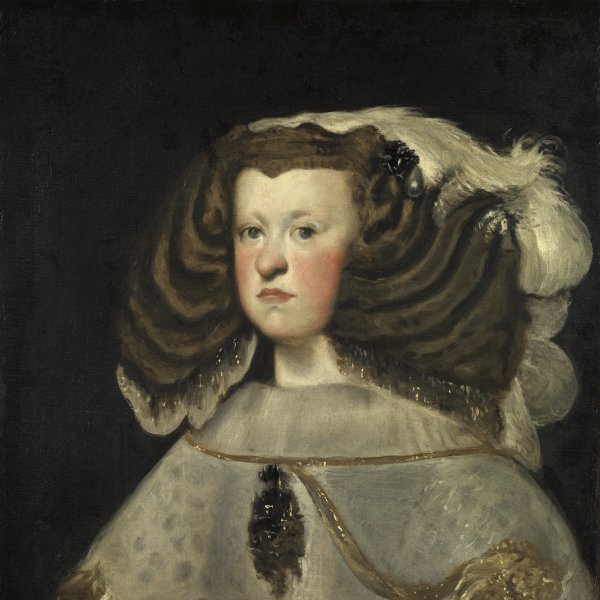Velazquez (Diego Rodríguez de Silva y Velázquez)
Velázquez was born in Seville and trained with Francisco Pacheco, in whose studio he is documented in 1610. Seven years later he set up as an independent master with his own studio. His early works primarily consist of still lifes and religious compositions.
In 1622 Velázquez moved to Madrid where he was appointed painter to the king and settled permanently at court. At this point he encountered the work of the great Venetian painters to be seen in the royal collection as well as the portraits of Sánchez Coello and Antonis Mor, which would have an important influence on his subsequent evolution. In 1627 Velázquez was appointed usher of the bedchamber and two years later travelled to Italy where he continued his studies and met Venetian painters as well as acquiring a knowledge of the artistic trends prevailing in Rome at that date.
After his return to Madrid in 1631 he was appointed gentleman of the wardrobe and at the same time worked on the decoration of the Buen Retiro palace. Dating from this period are a series of royal portraits and others of leading members of the court. In 1643 he was appointed gentleman of the bedchamber and superintendent of royal works, taking part in the remodelling of the Alcázar in Madrid. Velázquez returned to Italy in 1649, remaining there for two years and executing a number of commissions including the Portrait of Pope Innocent X (Galleria Doria-Pamphilj, Rome). During this time his portraits achieved a remarkable degree of perfection, painted with a very loose brushstroke and characterised by a clear interest in realism and expressivity, using an intense light that emphasises the volumes.
Velázquez returned to Madrid in 1651 where he spent the remainder of his life and was appointed palace chamberlain. His celebrated painting Las Meninas (Museo Nacional del Prado, Madrid) dates from this period. Velázquez’s activities as a court official frequently left him little time to paint. He died in Madrid in 1660, having been made a Knight of the Order of Santiago two years earlier.





